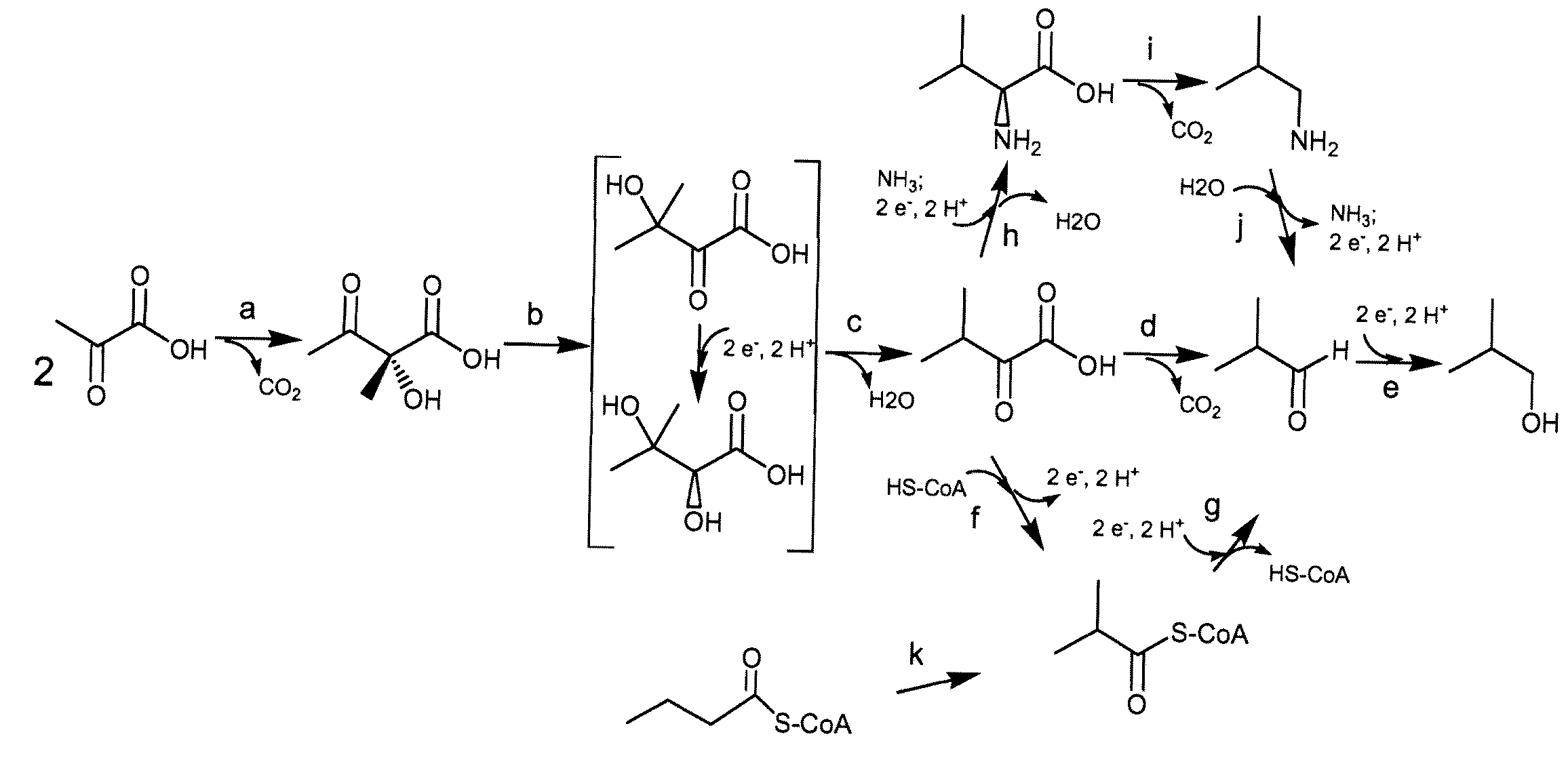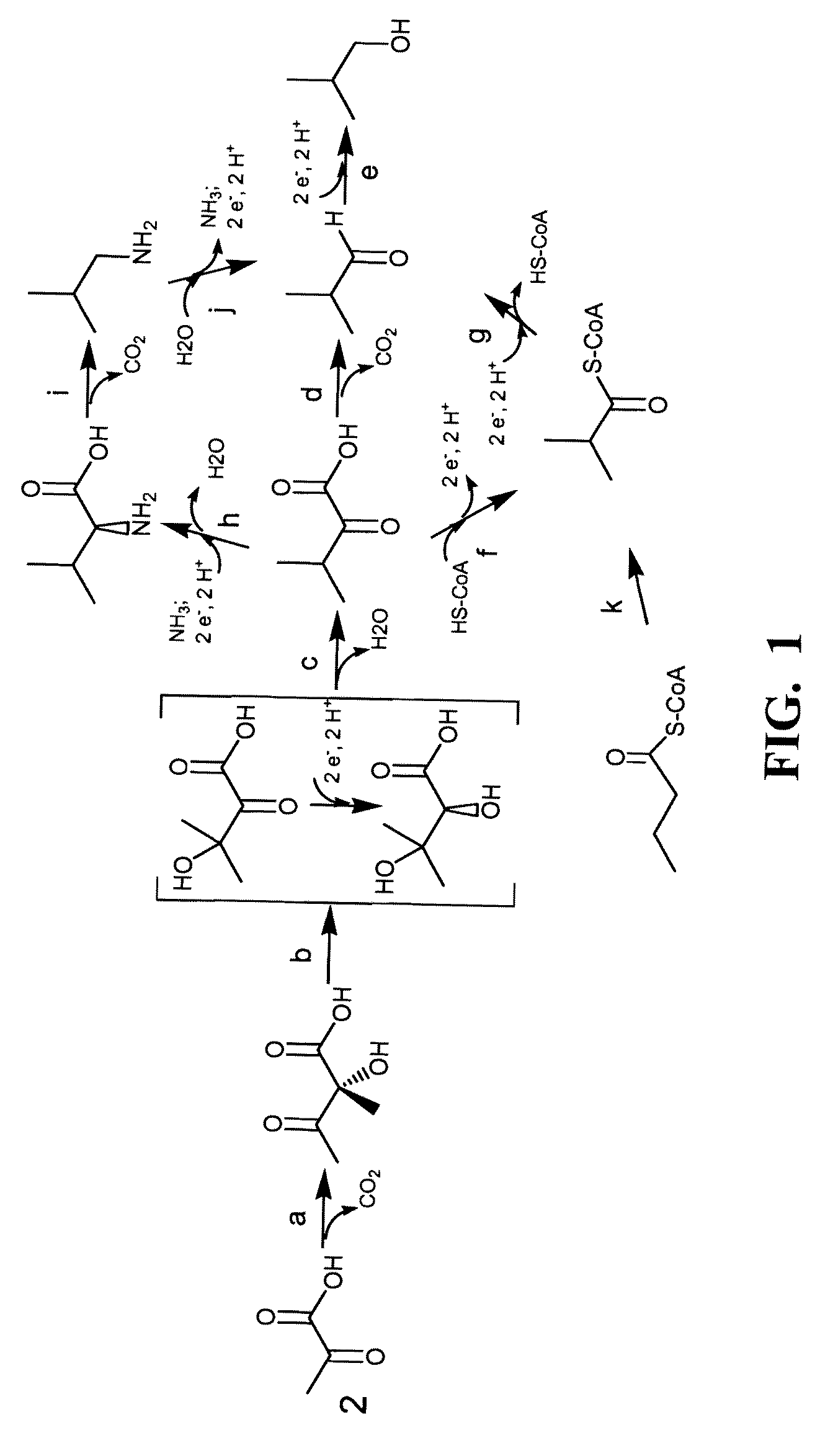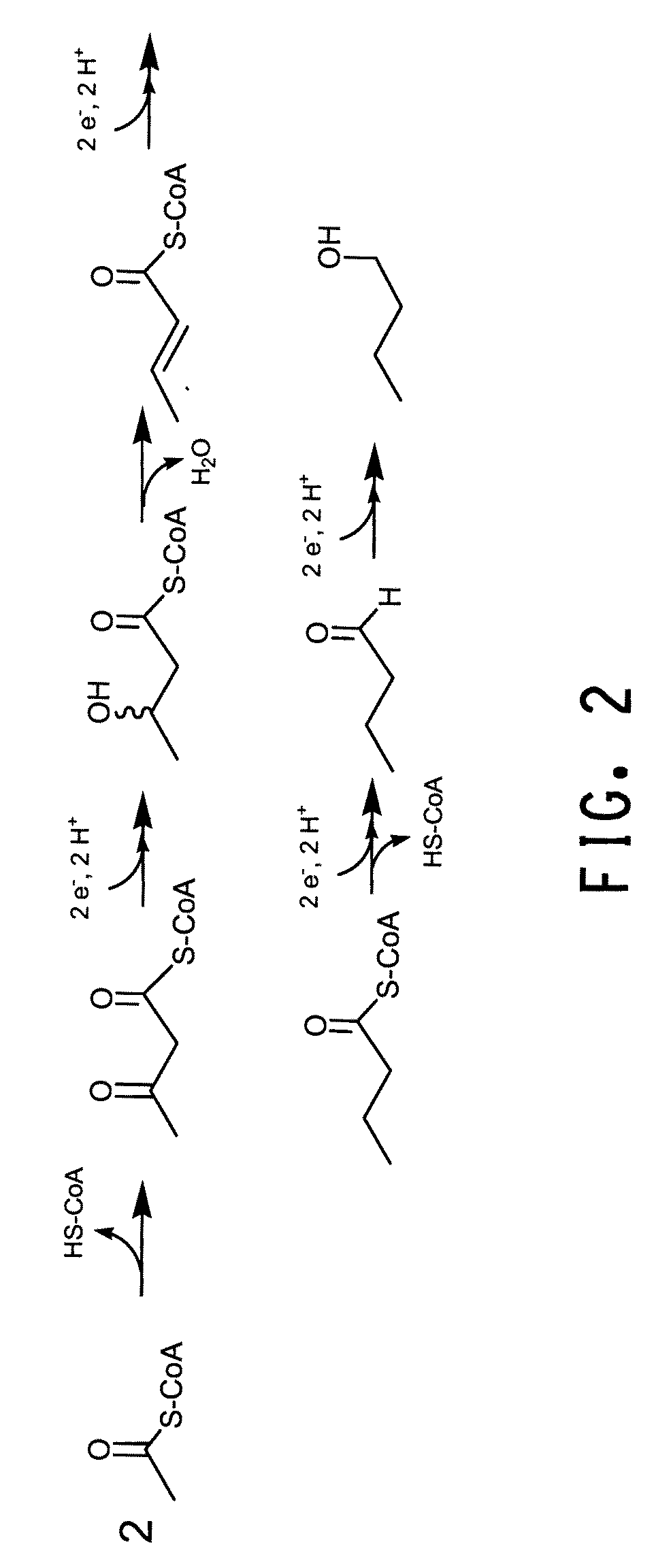Yeast with increased butanol tolerance involving high osmolarity/glycerol response pathway
a butanol and high osmolarity technology, applied in the field of microorganisms and genetic engineering, can solve the problems of complex butanol sensitivity in yeast, low yield, and limited biological production of butanols, and achieve the effects of improving the tolerance to said butanol, increasing the activity of the high osmolarity/glycerol response pathway, and increasing the activity of the pbs2 mitogen activated protein kina
- Summary
- Abstract
- Description
- Claims
- Application Information
AI Technical Summary
Benefits of technology
Problems solved by technology
Method used
Image
Examples
example 1
Identification of PBS2 from an Isobutanol Tolerance Screen
[0157]A yeast genomic library in the E. coli / yeast shuttle vector YEp13 was obtained from the American Type Culture Collection (ATCC 37323; Reed et al. (1989) J. Cell Sci. Suppl. 12:29-37). The library was provided in an E. coli host and supplies complete coverage of the Saccharomyces cerevisiae genome with 10,000 clones containing random and / or overlapping fragments of genomic DNA. The YEp13 vector includes a selectable yeast LEU marker and an E. coli marker, bla, specifying ampicillin resistance. The library was amplified by growth of the E. coli mixed culture in LB with ampicillin (50 μg / ml) for 16 hours at 37° C. with shaking, isolated from E. coli using a Qiaprep Spin Miniprep Kit (Cat. No. 27104) and transformed into S. cerevisiae BY4741 cells (ATCC 201388) using a lithium acetate transformation procedure (Gietz et al. (1995) Yeast 11:355-360). Transformants were washed from selection plates (SD Agar minus leucine, call...
example 2
Overexpression of PBS2 Coding Region
[0169]The effect of overexpression of the PBS2 coding region was assessed as follows. A Yeast ORF collection (Gelperin, White et al. (2005) Genes Dev. 19(23):2816-2826)_is available from Open Biosystems (Huntsville, Ala.). In this collection yeast ORFs are expressed from the GAL1 promoter in the vector BG1805. This vector can be introduced into ura3 yeast mutants and transformants selected for uracil prototrophy. In the presence of galactose and the absence of glucose, expression from the GAL1 promoter is elevated about 1000 fold relative to the barely detectable level observed with glucose grown cells (Johnston and Davis (1984) Mol. Cell. Biol. 4(8):1440-1448). Note that each ORF encodes a fusion protein of the form:
[0170]N Terminal Yeast ORF-C Terminal Epitope Tag
[0171]A plasmid containing the PBS2 ORF was obtained from this collection (YSC3867-9523439) and transformed into yeast strain BY4741 selecting for uracil prototrophy. To measure the eff...
example 3
Prophetic
Production of Isobutanol in Recombinant S. cerevisiae with Engineered Isobutanol Pathway and PBS2 Overexpression
[0174]The purpose of this prophetic example is to describe how to enhance isobutanol production in a yeast strain by combining an isobutanol biosynthetic pathway with PBS2 overexpression. To this end we need to disrupt TRP1, the gene encoding phosphoribosylanthranilate isomerase that catalyzes the third step in tryptophan biosynthesis, to provide a third selectable marker. BY4741 is the starting strain. A cassette containing DNA sequences that are located upstream and downstream just outside of TRP1 (up TRP1 and downTRP1) is created containing the following elements: upTRP1 DR URA3* DR downTRP1, where DR are direct repeat sequences and URA3* is a heterologous URA3 gene. The upTRP1 DR URA3* DR downTRP1 fragment is constructed by the method of Reid et al. ((2002) Yeast 19(4):319-328). Following this method the 5′ and 3′ flanking regions of the TRP1 gene, which conta...
PUM
| Property | Measurement | Unit |
|---|---|---|
| temperature | aaaaa | aaaaa |
| temperature | aaaaa | aaaaa |
| temperature | aaaaa | aaaaa |
Abstract
Description
Claims
Application Information
 Login to View More
Login to View More - R&D
- Intellectual Property
- Life Sciences
- Materials
- Tech Scout
- Unparalleled Data Quality
- Higher Quality Content
- 60% Fewer Hallucinations
Browse by: Latest US Patents, China's latest patents, Technical Efficacy Thesaurus, Application Domain, Technology Topic, Popular Technical Reports.
© 2025 PatSnap. All rights reserved.Legal|Privacy policy|Modern Slavery Act Transparency Statement|Sitemap|About US| Contact US: help@patsnap.com



